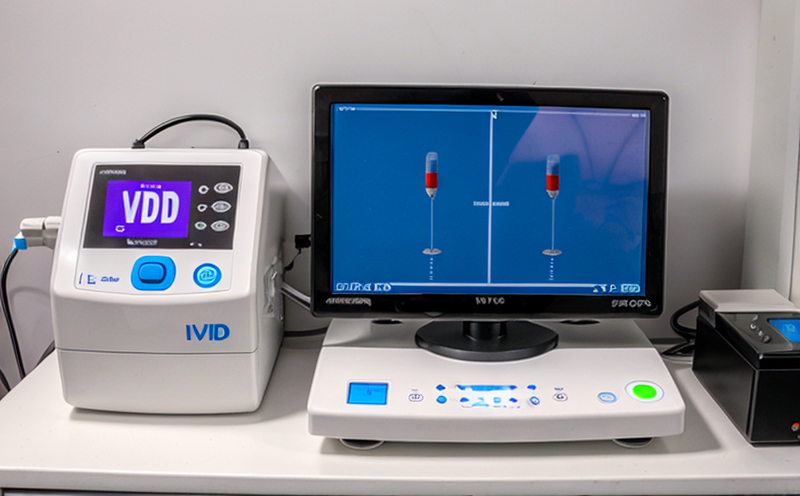In Vitro Diagnostic (IVD) Device Testing
In vitro diagnostic (IVD) device testing is a critical process in ensuring that medical devices accurately and reliably measure or detect conditions relevant to human health. This testing ensures compliance with regulatory standards, enhances patient safety, and supports the development of innovative diagnostics. IVD devices are used in various clinical settings, including laboratories, clinics, and hospitals, where they play a pivotal role in diagnosing diseases such as infectious diseases, cancer, genetic disorders, and other medical conditions. The accuracy and reliability of these tests directly impact healthcare outcomes and patient safety. Regulatory compliance is paramount for IVD device manufacturers. Compliance with standards like ISO 13485:2016, ISO 17025, and IEC 62304 ensures that the testing process adheres to best practices in quality management and technical requirements. These standards not only ensure that devices are safe but also provide a framework for continuous improvement. The scope of IVD device testing includes several key areas:- Method validation
- Sensitivity and specificity studies
- Bioanalytical method development
- Calibration verification
- Precision and accuracy assessment
- Durability testing
Why It Matters
Ensuring accurate and reliable in vitro diagnostic (IVD) device testing is critical for several reasons: - **Patient Safety**: Accurate IVD tests provide timely and precise information, which can lead to appropriate treatment decisions. - **Regulatory Compliance**: Adhering to international standards ensures that devices meet safety and performance requirements. - **Innovation**: Rigorous testing supports the development of new diagnostic tools and methods. - **Quality Management**: Continuous improvement processes enhance overall product quality. Regulatory compliance is essential for IVD device manufacturers. Meeting regulatory requirements such as ISO 13485:2016, ISO 17025, and IEC 62304 ensures that the testing process adheres to best practices in quality management and technical requirements. These standards not only ensure safety but also provide a framework for continuous improvement. In vitro diagnostic devices are used in various clinical settings, including laboratories, clinics, and hospitals. Their accuracy and reliability directly impact healthcare outcomes and patient safety.Industry Applications
| Application Area | Description |
|---|---|
| Diagnostics for Infectious Diseases | Testing for infectious diseases such as HIV, hepatitis, and tuberculosis. |
| Cancer Screening | Screening for various types of cancer using biomarkers. |
| Genetic Disorders | Detecting genetic mutations and syndromes in newborns and adults. |
| Cardiovascular Disease | Assessing risk factors for heart disease using lipid profiles. |
| Metabolic Disorders | Detecting disorders affecting metabolism, such as diabetes mellitus. |
| Testing Methodologies | Description |
|---|---|
| Polymerase Chain Reaction (PCR) | A technique used for amplifying specific DNA sequences. |
| Enzyme-Linked Immunosorbent Assay (ELISA) | An immunoassay technique used to detect the presence of antibodies or antigens. |
| Flow Cytometry | A technology that uses a beam of laser light to analyze cells and other particles in suspensions. |
The wide range of applications for IVD device testing underscores the importance of accurate and reliable diagnostic tools. These devices are essential for timely and precise healthcare decisions, ultimately improving patient outcomes.
Why Choose This Test
Choosing in vitro diagnostic (IVD) device testing is a strategic decision that offers several advantages: - **Regulatory Compliance**: Ensures adherence to international standards and regulatory requirements. - **Quality Assurance**: Provides confidence in the accuracy and reliability of diagnostic tests. - **Patient Safety**: Ensures timely and accurate diagnosis, leading to appropriate treatment decisions. - **Innovation Support**: Facilitates the development of new diagnostics by validating methods and devices.The testing process for IVD devices involves several key steps:
- Method Validation: Ensuring that tests meet specified performance criteria.
- Sensitivity and Specificity Studies: Assessing the ability to detect true positives and negatives.
- Bioanalytical Method Development: Creating methods for accurate measurement of analytes.
- Calibration Verification: Ensuring instruments provide consistent results.
- Precision and Accuracy Assessment: Evaluating reproducibility and correctness of results.
The choice of instrumentation is critical in IVD device testing. Commonly used instruments include automated analyzers, flow cytometers, PCR machines, and ELISA readers. Proper specimen preparation ensures accurate test results. This includes maintaining correct volume, temperature, and storage conditions, as well as using appropriate reagents and buffers.





